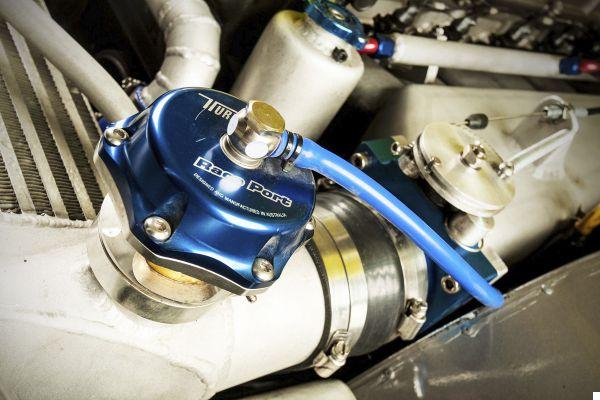
Introduction
In the world of automotive mechanics, there are numerous components that are essential for the proper functioning of a vehicle. One of these components is the turbo relief or wastegate, which plays a crucial role in turbocharged engines. In this article, we will explore in detail what exactly this valve is, how it works, and what its use is in engine performance. In addition, we will also analyze the different models available in the market.
What is the turbo relief or wastegate?
The turbo relief or wastegate, also known as the supercharger relief valve, is an essential component in turbocharged engines. Its main function is to control the pressure of the air that circulates through the supercharging system, thus preventing damage to the turbo and other engine components.
How does the turbo relief or wastegate work?
The turbo relief or wastegate works by means of an air pressure controlled opening and closing mechanism. When the air pressure in the boost system reaches a certain level, the valve opens to release the excess pressure. This prevents the turbo from being damaged by overpressure and ensures optimal engine operation.
Turbo Wastegate or Relief Valve Utility
The turbo relief or dump valve has several important uses in engine performance. First, it prevents damage to the turbo and other components in the supercharging system by releasing excess pressure. In addition, it also contributes to maintaining a constant and stable air pressure, which improves the efficiency and response of the engine. Lastly, this valve can also generate a distinctive sound when releasing air, known as a psssh or puff, which many drivers find exciting and sporty.
Models available on the market
In today's market, there are different models of turbo relief or dump valves, each with specific features and designs. Some of the most popular models include:
1. Atmospheric relief valve
This type of valve releases excess pressure directly to the atmosphere, generating the characteristic psssh sound. It is commonly used in high performance and sports vehicles.
2. Recirculated Relief Valve
This model recirculates the air released back to the intake system, thus avoiding the emission of sounds to the outside. It is more common in street and daily use vehicles.
3. Electronic relief valve
This type of valve uses an electronic system to control the opening and closing, which allows greater precision and adjustment based on the needs of the engine. It is used in latest generation and high performance vehicles.
4. Adjustable relief valve
This model allows manual adjustment of valve opening pressure, providing the ability to customize engine performance based on driver preference. It is commonly used in modified and competition vehicles.
Frequent questions
1. What is the difference between an atmospheric and a recirculating relief valve?
The main difference between these two types of valves lies in the destination of the released air. While the atmospheric relief valve releases the air to the atmosphere, generating a characteristic sound, the recirculated relief valve returns the air to the intake system, avoiding the emission of sounds to the outside.
2. Does the turbo relief valve need to be replaced?
The turbo relief valve is a component that can wear out over time and use. If operating problems are detected, such as a loss of power or an abnormal sound, it is advisable to check and, if necessary, replace the valve to avoid further damage to the turbo and other engine components.
Conclusion
The turbo relief or wastegate is an essential component in turbocharged engines. Its function of controlling the air pressure in the supercharging system ensures optimal engine operation and prevents damage to the turbo and other components. In addition, there are different models available on the market, each with specific characteristics. It is important to regularly maintain and check this valve to ensure optimum engine performance and prevent future problems.
We hope this article has been informative and has resolved your questions about the turbo relief or dump valve. If you have any additional questions or want to share your experience, feel free to leave a comment below. We will be happy to help you!
Until next time!
The EGR valve: everything you need to know ❯


























